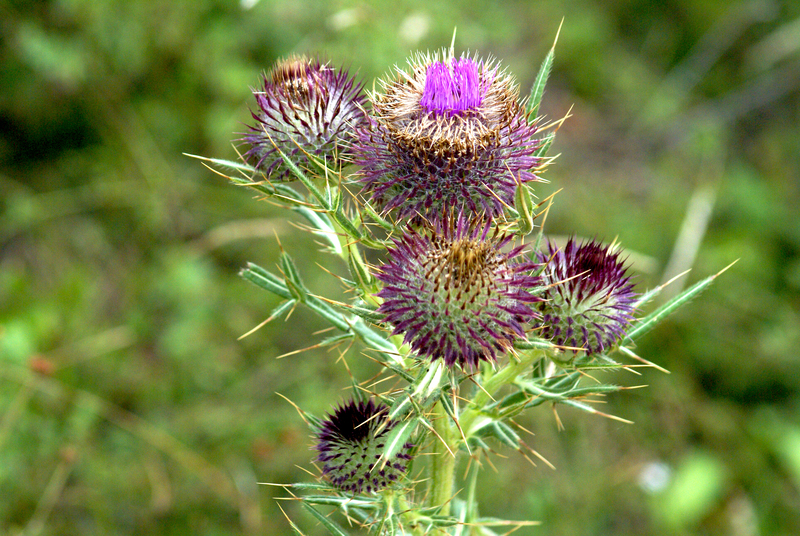Cultivate a Personal Herb Paradise with Unique Varieties
Posted on 20/08/2025
Cultivate a Personal Herb Paradise with Unique Varieties
If you're passionate about gardening and flavor, there's nothing quite as rewarding as cultivating your very own herb paradise at home. But why settle for common choices when you can explore unique herb varieties that offer stunning visual appeal, aromatic wonders, and tantalizing tastes for your kitchen? In this comprehensive guide, you'll discover how to create a lush, personalized oasis brimming with rare and unusual herbs that both seasoned horticulturists and gardening enthusiasts will find inspiring.

Why Choose Unique Herbs for Your Personal Herb Garden?
While familiar herbs like basil, parsley, and thyme have their place, unique herb varieties can elevate your garden and culinary experiences. By exploring uncommon herbs, you gain:
- Distinctive flavors and aromas for imaginative cooking and delightful beverages.
- Medicinal and therapeutic benefits from lesser-known healing plants.
- Visual vibrancy and unusual foliage that attract pollinators and admire your guests.
- Personal satisfaction from nurturing hard-to-find or heritage herb species.
Ready to cultivate your personal herb paradise? Let's explore the fascinating varieties you can grow and how to succeed with them!
Rare & Exotic Herbs: Expand Your Green Horizons
Let's go beyond the basics! Here's a curated selection of unique herbs to infuse diversity into your garden and your plate:
1. Vietnamese Coriander (Persicaria odorata)
- Flavor profile: Spicy, reminiscent of cilantro with peppery notes.
- Use: Essential in Southeast Asian cuisine, notably in salads and soups.
- Growing tips: Thrives in warm, moist conditions. Prefers partial shade.
2. Mexican Tarragon (Tagetes lucida)
- Flavor profile: Sweet aniseed with hints of licorice.
- Use: Substitution for French tarragon and a popular herbal tea.
- Growing tips: Loves full sun, drought tolerant once established.
3. Borage (Borago officinalis)
- Flavor profile: Cucumber-like, refreshing leaves and edible blue flowers.
- Use: Garnishing salads, drinks, and desserts; attracts bees in the garden.
- Growing tips: Self-seeds readily, likes sunny spots and well-drained soil.
4. Anise Hyssop (Agastache foeniculum)
- Flavor profile: Sweet, minty with an aniseed aroma.
- Use: Herbal teas, salads, pollinator magnet for bees and butterflies.
- Growing tips: Prefers sun, well-draining soil, drought tolerant.
5. Purple Shiso (Perilla frutescens var. crispa)
- Flavor profile: Complex; minty, basil-like, with cinnamon hints.
- Use: Japanese cuisine, pickling, and vibrant salads.
- Growing tips: Needs warmth and consistent moisture, can self-seed prolifically.
6. Lemon Verbena (Aloysia citrodora)
- Flavor profile: Intensely lemony and uplifting.
- Use: Scenting teas, desserts, and homemade potpourri.
- Growing tips: Thrives in sunlight with good drainage, trim regularly to keep bushy.
7. Lovage (Levisticum officinale)
- Flavor profile: Celery-like, with a slightly spicy note.
- Use: Salads, soups, and stocks -- entire plant is edible.
- Growing tips: Hardy perennial, prefers rich, moist soils.
8. Salad Burnet (Sanguisorba minor)
- Flavor profile: Refreshing, mild cucumber taste.
- Use: Fresh in salads, sandwiches, and summer drinks.
- Growing tips: Tolerates drought, likes sun or partial shade.
This list is just the beginning! You can continually add rare and regional specialties to your growing collection and transform your garden into a thriving herb sanctuary.
Designing Your Personal Herb Paradise
Success with unique herbs depends on thoughtful planning. Here's how to lay the foundation for your singularly stunning herb garden:
1. Select the Right Spot
- Most herbs prefer at least 6 hours of sunlight daily, although some thrive in partial shade.
- Look for well-drained soil to prevent root rot, or use raised beds and containers where drainage is poor.
2. Grouping By Water and Sun Needs
- Cluster herbs based on their similar needs: Mediterranean herbs (like oregano, thyme) love dry conditions, whereas Vietnamese coriander and shiso need consistent moisture.
- Label and organize your herbs for easy identification and optimal care.
3. Accessibility and Beauty
- Design beds or containers near your kitchen for easy harvesting.
- Mix herbs with different heights, leaf shapes, and colors for a vivid, aromatic tapestry.
4. Experiment With Vertical and Container Gardens
- If space is limited, try vertical planting systems or hanging pots.
- Mobile containers can help you move tender herbs indoors during colder months.
A well-planned, visually dynamic garden entices the senses and inspires its gardener daily.
Tips for Successful Herb Growing
Whether you are new to gardening or well-versed in horticulture, unique herbs may have specific requirements. Here are fundamental tips to cultivate a thriving personal herb paradise:
- Start with seeds or seedlings from reputable nurseries specializing in rare herbs for best variety.
- Prepare rich, loose soil enriched with organic compost to support robust root growth.
- Water wisely: Water deeply but infrequently, and avoid consistently wet soil unless required.
- Mulch with straw or leaf mold to retain moisture and keep weeds at bay.
- Pinch back growing tips to encourage bushy, healthy growth of your herbs.
- Harvest frequently to stimulate fresh foliage and to prevent flowering (bolting), which may alter an herb's flavor.
- Protect tender or tropical herbs with mulch or by moving containers indoors as seasons change.
- Check regularly for pests or disease and address quickly to prevent spread.
How to Use and Store Your Unique Herbs
Cooking is only the beginning! Herbs grown in your personal paradise can be used in myriad ways:
- Fresh in culinary dishes: Add vibrant color and zing to salads, sauces, and garnishes.
- Herbal teas: Experiment with blends like lemon verbena & anise hyssop for calming infusions.
- Homemade oils and vinegars: Infuse for unique dressings, marinades, or beauty uses.
- Drying and storing: Hang small bunches upside down in a well-ventilated area, then store in airtight jars away from sunlight.
- Freezing: Chop and freeze in ice cube trays with a splash of water or olive oil for convenient portions.
- Natural remedies and skincare: Craft salves, ointments, or homemade soaps from healing herbs like calendula and chamomile.
- Decor: Use edible flowers and aromatic foliage for natural centerpieces and bouquets.
Eco-Friendly and Biodiverse Herb Gardens
Embrace sustainability as you cultivate your personal herb retreat. A well-designed herb garden is a haven for pollinators and wildlife:
- Choose organic growing methods and avoid synthetic chemicals.
- Attract bees, butterflies, and beneficial insects with flowers like borage and hyssop.
- Interplant herbs between vegetables to naturally deter pests and boost yields.
- Save seeds from rare varieties to preserve biodiversity and share with fellow gardeners.
Unique Herbs For Indoor Paradise
No outdoor space? No problem! Many unusual herbs flourish indoors on windowsills. Top picks include:
- Lemon balm: Calming and citrusy, thrives with indirect sunlight.
- Micro basil: Compact and aromatic, perfect for small containers.
- Miniature rosemary: Adapted cultivars are ideal for windowsills.
- Purple shiso: Adds a splash of color and flavor to any room.
Use quality potting soil, provide adequate light (a sunny window or grow lights), and be careful not to overwater these indoor treasures.

Secrets to Nurturing a Lasting Herb Paradise
Growing rare and unique herbs is a rewarding journey, but it comes with learning curves. Here are a few secrets for steady success:
- Document your gardening activities: Keep a journal to record sowing dates, harvest times, and care notes for each plant.
- Rotate crops and refresh soil annually to reduce disease and encourage vigor.
- Engage with gardening forums or clubs to exchange rare seeds and tips.
- Celebrate successes--share cuttings, recipes, or bouquets with family and friends to spread the joy of unique herb gardening!
Conclusion: Harvest the Magic of a Unique Herb Oasis
To cultivate a personal herb paradise with unique varieties is to indulge in an ever-evolving hobby that delights the senses and feeds both body and spirit. Whether you have sprawling beds or a sunny windowsill, experimenting with rare and delightful herbs brings a sense of adventure and endless inspiration to your home and kitchen.
Begin with a few unique herb choices, nurture them well, and over time you'll grow not just plants, but a true botanical sanctuary reflecting your tastes and passions. Unleash your inner herbalist and let your garden become a paradise of discovery and delight!
For more tips, rare herb suggestions, and expert cultivation guides, stay connected--your herb oasis awaits, ready to be filled with unique, thriving varieties that will set your space and your spirit apart.

